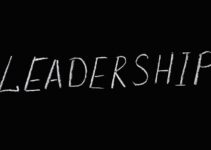As the head of the executive branch, the Prime Minister of Canada plays a crucial role in shaping federal governance. They lead the Cabinet in making important decisions, overseeing public administration, and managing inter-governmental relations. The executive branch's duties also encompass supervising federal agencies to ensure effective governance and service delivery.
Key Takeaways
- The Prime Minister is responsible for leading the executive branch in Canada and ensuring cohesive and effective decision-making within the Cabinet.
- The executive branch plays a crucial role in policy-making, influencing and shaping laws, implementing policies, and engaging stakeholders to address societal needs.
- The Prime Minister oversees public administration and regulatory compliance, establishing accountability mechanisms, promoting ethical conduct, and maintaining public trust.
- Inter-governmental relations are managed by the Prime Minister, who collaborates with provincial and territorial governments, engages in joint policy development, and resolves disputes through structured processes to foster compromise and consensus.
Prime Minister's Role
As the Prime Minister, you are responsible for both leading the government and representing Canada internationally. Your leadership is guided by constitutional conventions that define the powers and responsibilities of the Prime Minister's office. These conventions are unwritten practices that have evolved over time and are considered binding. Your role as the head of government involves making key policy decisions, setting the legislative agenda, and overseeing the functioning of the executive branch. Additionally, you are the primary spokesperson for the government and are accountable to the Parliament for the administration of the country.
Your leadership as the Prime Minister also extends to the international realm, where you represent Canada in diplomatic relations and international negotiations. Your actions and decisions not only shape domestic policies but also have significant implications for Canada's standing in the global arena. Your leadership, both nationally and internationally, plays a crucial role in shaping the direction and image of the country.
Transitioning into the subsequent section about 'cabinet responsibilities', your leadership as the Prime Minister is closely intertwined with the functioning of the cabinet.
Cabinet Responsibilities
Continuing from the Prime Minister's role, you hold the responsibility of selecting and leading the cabinet, which plays a crucial role in the governance and decision-making processes of the executive branch in Canada. As the head of the cabinet, you are responsible for ensuring that the cabinet decision-making process is cohesive and effective. This involves fostering open discussions, seeking consensus, and making collective decisions that align with the government's agenda and the needs of the Canadian populace.
Your Cabinet Responsibilities:
- Ministerial Accountability:
- Encouraging transparency and accountability among your ministers, ensuring they are answerable for their actions and decisions.
- Holding ministers accountable for the performance of their departments and ensuring that they adhere to the government's policies and priorities.
- Cabinet Decision Making:
- Facilitating discussions and debates within the cabinet to arrive at well-informed and strategic decisions.
- Ensuring that the policies and legislations proposed by the cabinet are in the best interest of the country and its citizens, while also considering the diverse perspectives within the cabinet.
Executive Decision Making
As an executive leader, your role in policy-making directly impacts the direction of governance in Canada. Your influence on legislation shapes the laws that govern the nation, making your decision-making pivotal in the functioning of the federal government. Understanding the significance of your decisions in policy and legislation is crucial for effective executive governance.
Role in Policy-Making
When you examine the executive branch's role in policy-making, you gain insight into its significant impact on Canadian federal governance. The executive branch plays a crucial role in policy implementation, ensuring that laws and regulations are carried out effectively. This involves overseeing the practical application of policies to achieve the intended outcomes and address societal needs. Additionally, stakeholder consultation is a key aspect of executive decision-making. Engaging with various stakeholders, such as interest groups, industry representatives, and the public, allows the executive branch to gather diverse perspectives and input, ensuring that policies are well-informed and reflective of the needs and concerns of the Canadian population. By actively involving stakeholders in the policy-making process, the executive branch can enhance the legitimacy and effectiveness of the policies implemented.
Influence on Legislation
You oversee the development and implementation of legislation, exerting substantial influence on Canadian federal governance through executive decision making. Your influence on the legislative process is significant, as you work closely with members of parliament to shape and guide the development of policies into laws. Your role in policy development allows you to steer the direction of legislative agendas, ensuring that they align with the government's priorities and objectives. Additionally, your involvement in intergovernmental relations enables you to collaborate with provincial and territorial governments to coordinate legislative efforts and address jurisdictional matters. Through strategic decision-making and collaboration, you have the power to shape the legislative landscape, ultimately impacting the direction and effectiveness of Canadian federal governance.
Public Administration Oversight
How effectively can you ensure public administration oversight in the Canadian federal executive branch? As a member of the executive branch, you play a crucial role in maintaining public oversight and administrative accountability. Here's how you can effectively ensure public administration oversight:
- Establish Clear Accountability Mechanisms
- Implement transparent processes that hold public administrators accountable for their decisions and actions.
- Foster a culture of responsibility and transparency within the public administration to ensure that decisions are made in the best interest of the public.
- Promote Ethical Conduct and Compliance
- Encourage adherence to ethical standards and regulatory compliance to maintain the public's trust in the administration.
- Implement regular audits and evaluations to identify and rectify any potential issues related to administrative accountability and public oversight.
Inter-Governmental Relations
You need to understand the strategies for federal-provincial collaboration and their impact on policy-making in Canadian federal governance. Additionally, it's important to grasp the mechanisms for resolving intergovernmental disputes in order to maintain effective governance. These points will provide valuable insight into the complexities of inter-governmental relations and their implications for the executive branch.
Federal-Provincial Collaboration Strategies
Implementing effective federal-provincial collaboration strategies is essential for successful inter-governmental relations in Canadian federal governance. To foster productive collaboration, consider the following:
- Collaborative Initiatives
- Engage in joint policy development and implementation to address shared challenges, such as healthcare or environmental conservation.
- Establish regular forums for federal and provincial representatives to exchange ideas and coordinate efforts, ensuring alignment in governance priorities.
These strategies aim to strengthen provincial partnerships, enhance communication channels, and promote cohesive decision-making. By actively engaging in collaborative initiatives and fostering provincial partnerships, the executive branch can effectively navigate the complexities of federal-provincial collaboration, ultimately contributing to the successful governance of Canada.
Impact on Policy-Making
Amidst the complexities of inter-governmental relations, the executive branch significantly influences policy-making processes in Canadian federal governance. Stakeholder consultation is a crucial aspect of policy development, wherein the executive branch plays a pivotal role. Through engaging with stakeholders at various levels of government, the executive branch ensures that policies are reflective of diverse perspectives and needs, contributing to the overall effectiveness of the governance framework. Furthermore, the executive branch's involvement in policy implementation is essential for ensuring seamless execution and adherence to federal guidelines. Public engagement is another area where the executive branch has a significant impact on policy-making, as it fosters transparency and accountability within the governance structure. By actively involving the public in policy discussions and decision-making processes, the executive branch can enhance the democratic legitimacy of federal governance.
Intergovernmental Dispute Resolution
During inter-governmental disputes, the executive branch oversees and facilitates resolution processes to address conflicting interests and maintain effective governance in Canada. This involves engaging in intergovernmental negotiations and implementing a structured dispute resolution process. Here's how the executive branch handles intergovernmental disputes:
- Establishing Dialogue Platforms:
- The executive branch initiates and supports dialogue platforms where different levels of government can discuss and negotiate their differing interests and concerns.
- Mediating Disputes:
- It takes an active role in mediating disputes between different levels of government, employing a variety of techniques to foster compromise and consensus, ultimately aiming for the smooth functioning of federal governance.
Federal Agency Supervision
Ensure effective supervision of federal agencies to maintain accountability and efficiency in their operations. The supervisory authority vested in the executive branch plays a crucial role in ensuring regulatory compliance and proper functioning of federal agencies. By overseeing their activities, the executive branch can uphold standards, prevent misconduct, and promote transparency.
| Supervisory Authority | Regulatory Compliance | Efficiency Improvement |
|---|---|---|
| Appointing Agency Heads | Monitoring Compliance | Performance Evaluation |
| Setting Agency Objectives | Enforcing Regulatory Standards | Streamlining Processes |
| Reviewing Agency Reports | Investigating Non-Compliance | Implementing Best Practices |
The executive branch exercises its supervisory authority by appointing agency heads, setting objectives, and reviewing reports to ensure compliance with regulations. This oversight helps in enforcing regulatory standards, investigating non-compliance, and monitoring the efficiency of agency operations. By focusing on regulatory compliance and efficiency improvement, the executive branch can fulfill its duty of maintaining effective supervision of federal agencies, thus upholding accountability and promoting the overall effectiveness of governance.
Frequently Asked Questions
What Is the Process for Appointing Federal Agency Heads and How Does the Executive Branch Oversee Their Operations?
When appointing federal agency heads, the process involves careful consideration of qualifications and expertise. Oversight by the executive branch ensures coordination and alignment with government priorities. The appointment process includes vetting, interviews, and selection based on merit and experience. Once in position, agency heads are expected to operate within the framework of government policies and regulations, with regular oversight from the executive branch to ensure effective and efficient operations.
How Does the Executive Branch Coordinate Inter-Governmental Relations Between the Federal Government and Provincial/Territorial Governments?
To coordinate inter-governmental relations between the federal government and provincial/territorial governments, the executive branch plays a crucial role. Intergovernmental cooperation is essential in maintaining a cohesive governance system. The federal provincial relations are overseen by the executive branch, ensuring effective communication and collaboration. This oversight is crucial for managing agency operations and fostering cooperation between different levels of government.
What Role Does the Executive Branch Play in Public Administration Oversight and Ensuring Accountability Within Government Agencies?
In overseeing public administration and ensuring government accountability, the executive branch plays a crucial role. It exercises authority in appointing key officials and supervising agency operations. By doing so, it ensures that government agencies adhere to established guidelines and are accountable for their actions. This oversight is essential for maintaining transparency and efficiency within the government, ultimately serving the public's best interests.
How Does the Executive Branch Make Decisions on Important National Issues and What Factors Are Taken Into Consideration?
When it comes to handling important national issues, the executive branch takes a multitude of factors into account in their decision-making process. From intergovernmental relations to public administration oversight, they carefully weigh various considerations to ensure effective governance. Understanding the complexity of these decisions is crucial in appreciating the thoroughness of the executive branch's oversight and decision-making process on matters that impact the nation as a whole.
What Are the Specific Responsibilities of the Executive Branch in Supervising Federal Agencies and Ensuring They Are Carrying Out Their Mandates Effectively?
When supervising mandates, the executive branch ensures federal agencies carry out their duties effectively. It oversees agency effectiveness and makes executive appointments to uphold their mandates. Additionally, the executive branch manages intergovernmental relations to ensure cooperation and coordination across different levels of government. These responsibilities are crucial for maintaining the proper functioning of federal agencies and promoting effective governance.
Conclusion
So, now you know the ins and outs of the executive branch duties in Canadian federal governance. You've got a clear picture of the Prime Minister's role, cabinet responsibilities, and executive decision making. Keep in mind, though, that the devil is in the details when it comes to overseeing public administration and federal agency supervision. Stay on your toes and don't let anything slip through the cracks!



